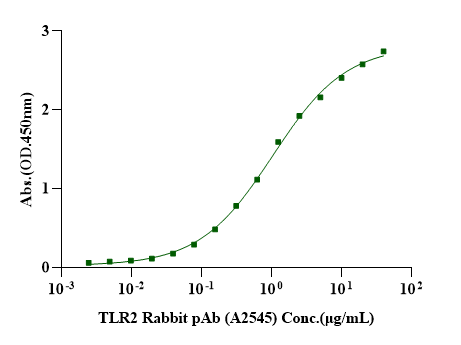O60603, https://www.uniprot.org/uniprotkb/O60603/entry
90 kDa
50 mM Hepes, ph8.0, 500 mM NaCl, 0.05%DDM, 0.01%CHS.
·6 months from date of receipt, -60 to -80 °C as supplied.
·about 3 days in 2 to 8 °C.
·Please avoid repeated freeze-thaw cycles.
1. Jin M S, Kim S E, Heo J Y, et al. Crystal structure of the TLR1-TLR2 heterodimer induced by binding of a tri-acylated lipopeptide[J]. Cell, 2007, 130(6): 1071-1082.
The TLR family of proteins plays a key role in innate immunity by detecting conserved microbial molecular patterns like lipoproteins, lipopolysaccharides, flagellin, and nucleic acids. These type I transmembrane glycoproteins feature a single transmembrane domain and a conserved intracellular domain. TLR2, often paired with TLR1 or TLR6, is crucial for recognizing microbial lipoproteins and lipopeptides, driving inflammatory responses. It's particularly important in combating tuberculosis. Overall, TLR2 is pivotal in multiple physiological processes and holds great promise as a therapeutic target. Developing TLR2-targeted drugs could significantly advance treatments for various diseases.
1μg (R: reducing condition).

Immobilized TLR2 Flag His tag, Human (SP17) (Cat. No. UA060021) at 2 μg/mL (100 μL/well) on a Nickel Coated plate can bind TLR2 Rabbit pAb (A2545) with EC50 of 0.91-1.20ug/mL.